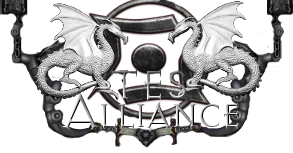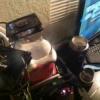DOWNLOAD MODS
Are you looking for something shiny for your load order? We have many exclusive mods and resources you won't find anywhere else. Start your search now...

-
Posts
11 -
Joined
-
Last visited
Content Type
Profiles
Forums
Downloads
Tutorials
Gallery
Store
Events
Tutorial Comments posted by michaelrw
-
-
im having a tough time understandong the practical/functional difference between an environment map and a specular?
Why would someone choose to use one over the other?
Aside from the idea that environment maps get their own file, whereas i can put specular in the normal alpha, im not sure of the difference. Although, looking at the bethesda textures you can see that the speculars and env.maps are different, even though they are both grayscale--they seem to highlight different areas of objects/materials.. im just not sure how or why
Also, if i want to add env.mapping to a model do you have to check the environment map SLSF shader flag for it to apply? or is it ok just to add the texture path without adding shader flag?





Graphic Artistry: Cube Maps
in Graphic Artistry
Posted
I agree with this comment. While i understand the basics of cubemaps, i still dont understand how skyrim uses them.. all of the cubemaps i have ever seen in the skyrim game files look like some odd designs and colors, and is very difficult (impossible, really) to comprehend what is being depicted in the image. in my work on glaciers and ice texturing I have run into the glacierice_e.dds cubemap. If you look open the texture, it is a texture with random shapes and lots of black, blue, green colors and gradients. For the glacier meshes I have been trying to make them render more white, but using a white diffuse map is not good enough, it seems that the glacierice_e cubemap is giving the glaciers a blue/green tint. (also the vertex color values that are set in the mesh also give a blue tint, but i think the cubemap is contributing too.)
So basically, from the few experiences i have had with cubemaps (for TESV) it seems they are (at least sometimes) used by meshes to give the object a color tint when rendered in-game. However, (assuming this is correct) it does not really help because I still dont know how to edit the cubemap to get whatever result im looking for.
My main curiosity is how the cubemap is applied to the mesh. Obviously it cannot use the same UV mapping that the other maps use. So does the texture actually get applied to the model, or does the game only use some of the color data and selectively apply it to the object in real-time? i dont know... it is confusing. Most info i have found on cubemaps is very general, and usually says nothing about how they are actually used/applied